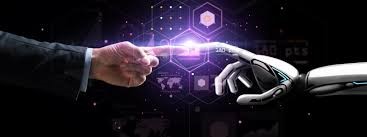
- 08-11-2024
- Artificial Intelligence
In today’s digital landscape, the collaboration between humans and AI is becoming essential for effective problem-solving and decision-making.
The combination of human creativity with AI’s analytical capabilities offers tremendous potential, yet recent research from the MIT Center for Collective Intelligence (CCI) reveals that the dynamics of this collaboration are more complex than previously understood.
Key Insights from Research
A meta-analysis published in Nature Human Behaviour titled "When Combinations of Humans and AI Are Useful" https://www.nature.com/articles/s41562-024-02024-1 indicates that while human-AI teams often outperform humans alone, they typically do not surpass the effectiveness of AI systems working independently, especially in decision-making tasks. However, these collaborations excel in creative endeavors, frequently achieving better results than either humans or AI alone.
Decision-Making vs. Creativity
The effectiveness of human-AI collaboration varies by task. AI often leads in decision-making scenarios, such as fraud detection and demand forecasting, due to its ability to process large datasets. In contrast, creative tasks, including content generation and social media summarization, benefit from the synergy of human insight and AI efficiency, where humans provide imagination and context, while AI handles data-intensive processes.
Practical Implications for Organizations
To optimize human-AI collaboration, organizations should:
1. Integrate Tasks Wisely:
Assess which tasks are best suited for AI, humans, or a mix of both, leveraging AI for decision-making and collaboration for creative tasks.
2. Ensure Data Quality:
Utilize high-quality, well-governed data to enhance the performance of both human and AI efforts.
3. Foster Innovation:
Explore how AI can support creative processes, allowing human teams to focus on more strategic initiatives.
Conclusion: Embracing Human-AI Synergy
The future of work lies in innovative collaborations that harness the strengths of both humans and AI. By understanding the unique contributions of human-AI teams, organizations can drive better outcomes and foster a culture of creativity. As AI continues to evolve, those that cultivate collaborative environments will be best positioned to thrive in the age of intelligent automation, unlocking new avenues for innovation and growth.